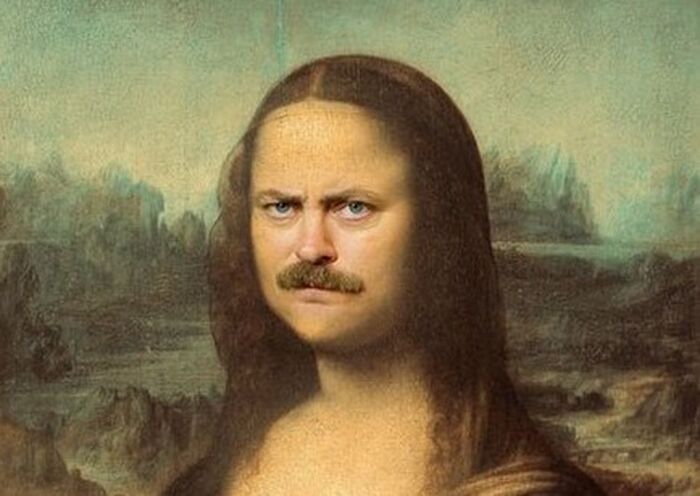Raving about a Rabbit: an examination of Jeff Koons
Kate Robertshaw examines what the sale of Jeff Koons’ ‘Rabbit’ for a record $91.1 million reveals about the link between art, inspiration, and money

On May 15th this year Jeff Koons’ ‘Rabbit’ sold for $91.1 million at the contemporary auction at Christie’s in New York, setting the record price for work by a living artist. This sculpture of a stainless-steel rabbit surpassed Hockney’s 1972 painting, ‘Portrait of an Artist (Pool With Two Figures)’, which previously held the record at $90.2 million.
With this new record comes a looming awareness of the growing inequality within the art world that threatens the very spirit of art and its accessibility. It highlights the existence of a ‘victor economy’ in the world of contemporary art, a world in which smaller galleries supporting and placing the attention on unknown artists are barely sustained. Art in this world is not a form of expression but rather a form of ostentation, and owning a Koons is the equivalent of owning a Birkin.
Art in this world is not a form of expression but rather a form of ostentation
Where does the ‘Rabbit’ lie in this elitist realm of art and what is its significance? Koons’ work is defined by its both literal and figurative larger than life qualities. He set his first record for a living artist with ‘Balloon Dog (Orange)’, sold for $58.4 million in 2013. But his work is extremely varied and marked by both contradiction and controversy. It fluctuates from kitsch sculptures, including one of his pet chimpanzee and one of Michael Jackson with Bubbles, to his infamous series ‘Made in Heaven’, showing him and his ex-wife, Ilona Staller, in a variety of sensual positions. What is consistent in Koons’ work is his pervasive extravagance which underscores the essence of modern culture.
The ‘Rabbit’ fits in neatly with Koons’ larger-than-life portfolio. The stainless-steel sculpture is infused with contrasts. By nature, it should appear cute and cuddly, yet its steel exterior smears it with a sinister and icy identity. The opposition between what it represents and what it actually is may be viewed as a reflection of the artifice inherent in our society, where the actuality of an image is skewed from it purpose. This phenomenon is ubiquitous, pervasive, present even in the seemingly innocent Instagram photo which, infiltrated by capitalist intent, now is surrounded by brand deals and advertisements.
In Koons' work there is an honesty to the exaggeration
The reflective surface of the ‘Rabbit’ means that as we view the sculpture we simultaneously view ourselves. It is, literally, a reflection of our own society. The ‘Rabbit’ becomes a statement of the deception present in society, acting as a social commentary and critique of our mainstream culture and its focus on the image.
Critics in 1986 saw the ‘Rabbit’ as embodying the spirit of the time. America in the 80s was defined by exaggeration. Big hair, heavy shoulder pads and gaudy colours served as a mirror image to Koons’ work. Life and art were simultaneous in their replication of one another. And this imitation of life is just as pertinent now in the case of the ‘Rabbit’ as it was in the 80s.

The flamboyant, bordering on obnoxious, nature of his work means that opinion on Koons is still divided. However, in the context of the growing exclusivity of the art market Koons’ work seems perfectly apt. Our consumerist culture has fostered a society in which we are bombarded by unlifelike images, corrected by distortion. Thanks to the creation of Facetune, it has never been so easy to have inflated lips or exaggerated hips. In Koons’ work, there is an honesty to the exaggeration which is refreshing in a world where people deny the artificiality of their appearances.
There is no question as to the artistic validity of sculptures, and as such those, like Koon’s, compel us to reevaluate the way we view everyday objects. This encouragement of reassessment is becoming increasingly important when the foundations of our own society are threatened by political rhetoric and we are relentlessly bombarded by consumerist propaganda. Thus, in an increasingly unselfawarely unsubtle society, I welcome Koons’ open lack of subtlety with open arms.
This legendary Wednesday night at Christie’s demonstrates the prominence of Koons and his equal appeal now as he had in the 80s. In a world where art is becoming commodified, and masterpieces are reduced to trophies of the privileged, the ‘Rabbit’ materialises as a ray of light. It reminds us of the artifice present in such a culture and places the precedence upon the duty of the viewer to examine a piece of art as they would do their own society.
Art, money and the individual will forever have a complex relationship, yet we must not let money become the definition of the value of a work of art. The market’s interest in costs must be matched by our priceless passion and appreciation. Koons’ ‘Rabbit’ emerges resistant and rebellious to such a culture, reflecting the fundamental principles of art.
 Comment / Cambridge students are too opinionated 21 April 2025
Comment / Cambridge students are too opinionated 21 April 2025 Comment / Does the AI revolution render coursework obsolete?23 April 2025
Comment / Does the AI revolution render coursework obsolete?23 April 2025 Comment / Cambridge’s tourism risks commodifying students18 April 2025
Comment / Cambridge’s tourism risks commodifying students18 April 2025 News / News in brief: campaigning and drinking20 April 2025
News / News in brief: campaigning and drinking20 April 2025 Interviews / Meet the Chaplain who’s working to make Cambridge a university of sanctuary for refugees20 April 2025
Interviews / Meet the Chaplain who’s working to make Cambridge a university of sanctuary for refugees20 April 2025






